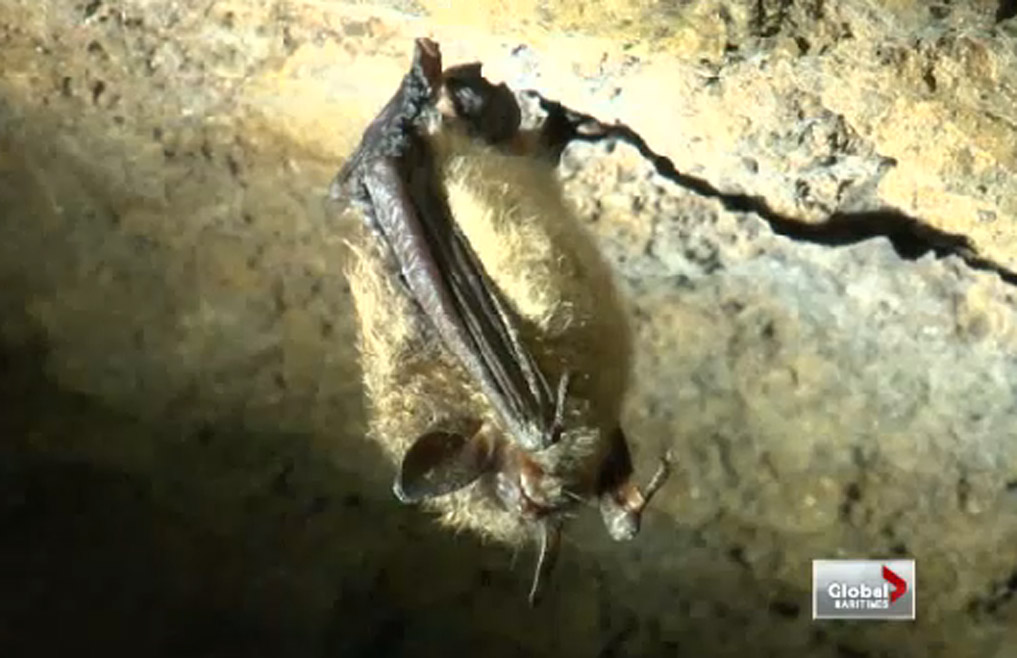SAINT JOHN – Once one of the most abundant species of bats found in New Brunswick, the little brown bat population continues to drop, almost disappearing in the region.

For more than a year, Global New Brunswick has followed researchers as they’ve monitored the effect the white-nose syndrome has had on bats in the Maritimes.
The white, fuzzy growth has plagued the bat population in the region since 2011. At that time, researchers counted about 7,000 live bats in 10 New Brunswick caves. In 2013, that number had dropped dramatically to 79.
Today, that number’s fallen to 22.
“To see the disappearance of multiple species of a group, it’s certainly something to witness,” said Karen Vanderwolf, an Associate Researcher at the New Brunswick Museum. “It’s a bit dramatic, but I feel like it’s a historic moment to be witnessing this.”
The white-nose syndrome was first spotted in New York in 2006. The spores of the fungus came to North America from Europe and quickly spread through the eastern states.
As the fungus grows it causes damage to the bat’s wings, which are critical to their survival throughout the winter. Their wings help maintain water and blood pressure levels as the hibernate. Because of the damage, the bats get thirsty and are waking up more frequently during their hibernation.
They emerge looking for food, but insects that they would typically feed on aren’t around in the winter, and the bats die from a combination of starvation and/or hypothermia.
Researchers haven’t had much luck in combating the fungus, which has wiped out millions of bats.
“It’s going to take maybe centuries for it to recover, if it does recover, so I feel lucky to have seen it before it disappears,” Vanderwolf said.
There are three bat species affected by the fungus: the little brown bat, northern long-eared bat and tri-coloured bat. Scientists are pushing for them to be listed as endangered species, which would mean there would be permits and restrictions on how bats are handled by the public.
Andrew Hebda, Curator of Zoology at the Nova Scotia Museum, says the fungus has had a regional effect. He’s seeing similar disappearances in Nova Scotia caves.
“We’ve had two winters where there’s been very heavy mortality within our hibernation sites,” Hebda said. “One site which had over 17,000 bats consistently over a number of years, was down to basically around a thousand or so.”
There is an application under review to have the species listed as endangered nationally.
Bats are critical to the world’s biodiversity and for controlling the insect population. Estimates have been done on the impact that the loss of the bats will have on North American agriculture. At the moment, those estimates are about $3.7-billion a year, according to the NB Museum.




Comments